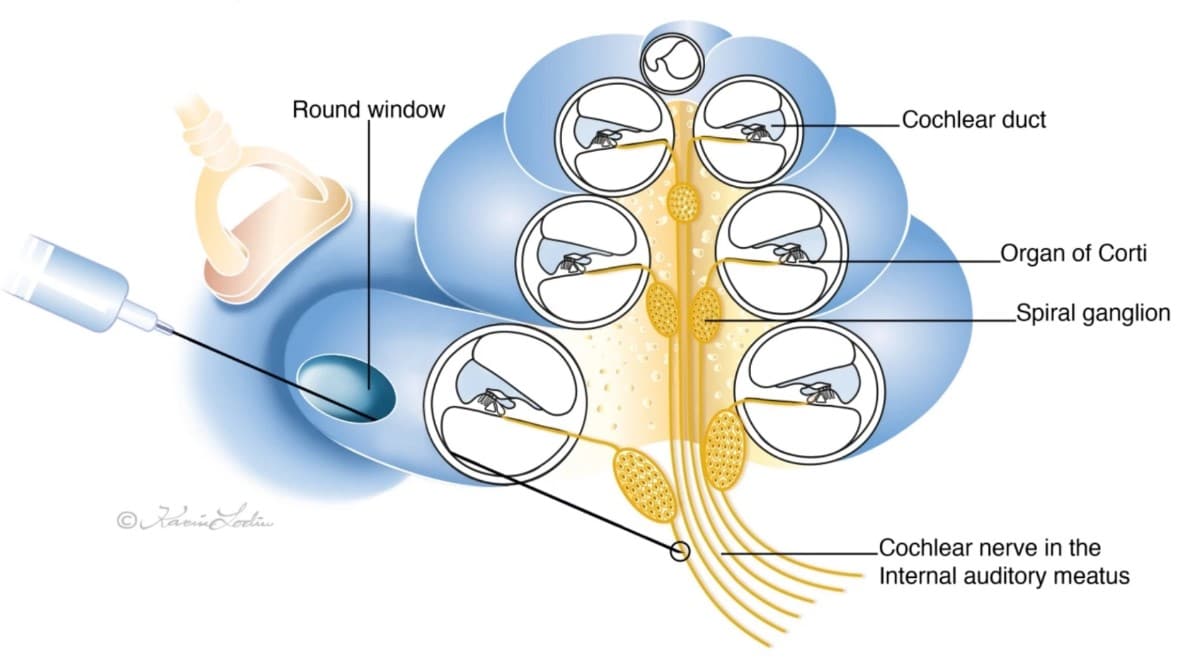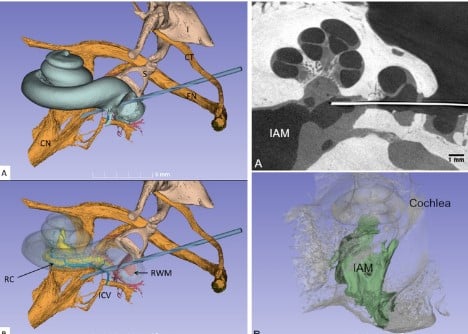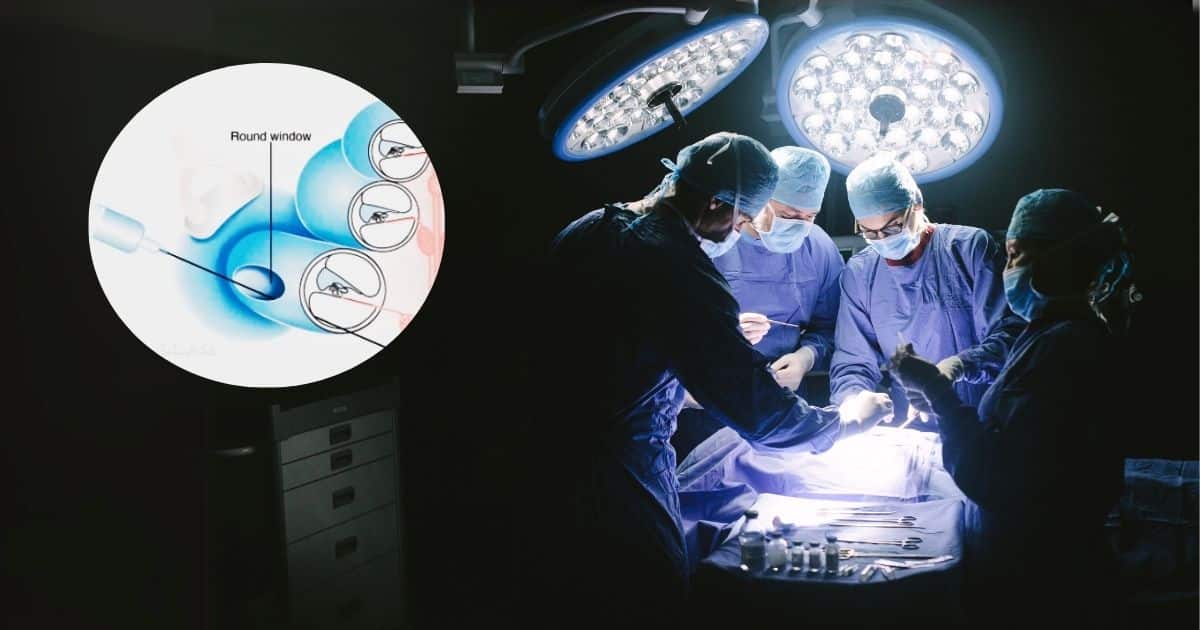A pioneering new surgical technique developed by Rinri Therapeutics, a University of Sheffield spinout, has the potential to change the landscape of hearing loss treatment. The method provides a minimally invasive approach to delivering regenerative cell therapy directly to the auditory nerve. This advance will be central to Rinri’s first human trials for Rincell-1, their leading therapy product, set to begin next year.
Hearing loss affects millions of people worldwide, with conditions like age-related hearing loss and auditory neuropathy spectrum disorder (ANSD) linked to the deterioration of nerve connections in the inner ear.
Currently, there are no effective treatments to repair these damaged nerve connections, leaving millions with limited options for significant hearing improvement.
Novel Surgical Pathway
The research, recently published in Scientific Reports, describes how researchers developed a method to access the auditory nerve safely through the round window of the inner ear, eliminating the need for highly invasive skull-based surgeries. The technique allows for direct access to the nerve and provides a pathway for cell-based therapies designed to regenerate auditory connections.
“This paper describes a novel surgical pathway to access the human cochlear nerve, opening up an important route to deliver new therapeutic agents, such as cells. For us, it is a fantastic achievement and it consolidates our plans of commencing critical trials to treat neural hearing loss in the very near future.”
–Prof. Marcelo Rivolta, University of Sheffield School of Biosciences
Using regenerative cell therapy developed through Rinri’s OSPREY™ platform, Rincell-1 is engineered to restore nerve connections between the inner ear and the brain. The therapy holds promise for treating severe age-related hearing loss and ANSD, conditions that severely impair the ability to comprehend speech, especially in noisy environments.

Drawing showing the trajectory for injection to the cochlear nerve in the internal auditory meatus via the round window. Image by Karin Lodin. Credit: Li, H. et al. (2024)
Initial preclinical results have demonstrated the treatment’s safety and effectiveness, laying the groundwork for human trials.
Minimally Invasive Yet Impactful

Images: Li, H. et al
Traditional approaches to accessing the auditory nerve have required invasive surgery due to the nerve’s location deep within the skull. However, the newly developed route leverages the round window, a natural entry point to the inner ear, to access the nerve with far less risk. Researchers from institutions across the UK, Canada, and Sweden collaborated to validate this method using cadaveric human temporal bones and state-of-the-art imaging techniques, including synchrotron radiation phase-contrast imaging.
Dr. Simon Chandler, CEO of Rinri Therapeutics, underscored the significance of this breakthrough. “The novel access route developed in elegant work by this team of leading hearing loss researchers and surgeons makes the delivery of transformative cell therapies like Rincell-1 possible,” Chandler said. “We’re delighted that the first-in-human trial for our lead product is on track to start in 2025, bringing the potential to transform the lives of people with neural hearing loss.”
The technique promises to be highly beneficial in clinical practice.
“Neural hearing loss has a significantly detrimental effect on the ability to understand speech, particularly with background noise. The novel surgical access devised by this research collaboration provides a therapeutic pathway to the cochlear nerve, expected to be valuable in regenerative cell therapy.”
–Prof. Doug Hartley, CMO at Rinri Therapeutics and University of Nottingham researcher
As Rinri Therapeutics prepares for human trials, there is optimism about the therapy’s potential to address a significant global medical need. If successful, this approach could not only restore hearing but also greatly improve the quality of life for millions affected by severe hearing loss.
Reference:
Li, H., Agrawal, S., Zhu, N., Cacciabue, D. I., Rivolta, M. N., Hartley, D. E. H., Jiang, D., Ladak, H. M., O’Donoghue, G. M., & Rask-Andersen, H. (2024). A novel therapeutic pathway to the human cochlear nerve. Scientific Reports, 14(26795). https://doi.org/10.1038/s41598-024-74661-5
Source: Univ. Sheffield, Scientific Reports






